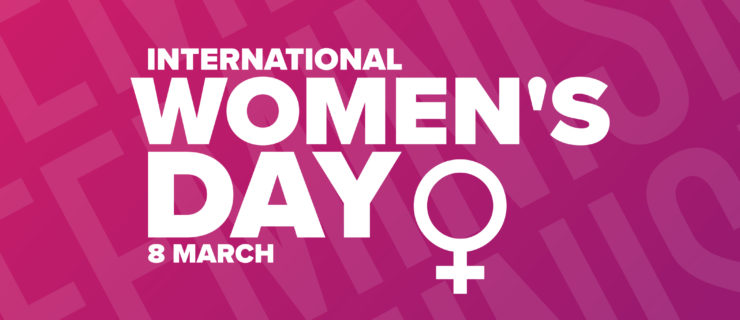The Space Between: Being Gender-Nonconforming in the Dance World
The dance community is famous for supporting its own. Take the way we rallied behind Prince George after television anchor Lara Spencer mocked him for studying “BAH-lay,” or how competition dancers wore orange ribbons on their team jackets to honor the passing of fellow dancer and Marjorie Stoneman Douglas High School shooting victim Jaime Guttenberg.
But for dancers who are gender-nonconforming—who don’t present themselves as either female or male—that level of support isn’t always as easy to come by. “The gender binary has deep roots within dance and the dance industry,” says Hayden J. Frederick, a performer, choreographer, and faculty member at Broadway Dance Center in NYC. And that poses challenges for gender-nonconforming dance artists.

Hayden J. Frederick (Bruce-Michael Grossman, courtesy Frederick)
Dance and Gender Stereotyping
“For ballet in particular,” says Angelica Stiskin, artistic director of the Joffrey Ballet School’s jazz and contemporary trainee program in NYC, “there is a long history of gender labels and roles and their intrinsic existences in process and performance.” Pointework and the type of partnering seen in classical ballets reinforce old-fashioned conceptions of gender. And in many pre-professional ballet environments, ballet trainees are separated into classes by the gender they were assigned at birth, which means that the skills they develop and the roles they’ll later take on are determined by the institution’s perception of their gender, rather than their own.
Gender labeling often extends to dancewear, as well. “I take ballet and modern classes daily and must adhere to a very strict, very gendered dress code,” says MJ Markovitz, a student in the scholarship program at The Ailey School who was assigned female at birth and uses they/them pronouns. “When I look at myself in the mirror in my pink tights, I feel extremely disconnected. I feel like my body is not mine, as if a different person is looking back at me through my reflection. That’s not because I don’t like my body—I love my body and myself. This is because wearing pink tights inherently forces me to be seen as someone I am not.”
The commercial-dance world is usually seen as more progressive than the ballet or academic-dance scenes, but gender stereotyping still happens. “In my classes, teachers tend to separate groups by gender—boys in group one, girls in group two—and they offer choreographic choices based on gender,” Frederick says. “However harmless the intention may be, it eliminates the existence of nonbinary folks.” And sometimes dance leaders’ intentions are not harmless. Philadelphia, PA–based performer K. Kahikinaokala Ching recalls a rehearsal in which a director refused to address them using they/them pronouns, as Ching prefers. “Those may be your pronouns,” Ching remembers the director saying, “but they are certainly not mine.”

MJ Markovitz (Marisa Melito, courtesy Markovitz)
Dance as a Haven
Despite the obstacles, for gender-nonconforming dancers, studying dance can also be a route to freedom. “Growing up, my dance studio family was very open and very honest with each other,” says Megz Alfonso, who appeared on Season 12 of “So You Think You Can Dance” and uses they/them pronouns. As a kid, they say, navigating gender “wasn’t a big issue for me.”
Markovitz grew up in the competition-dance world, “a realm of dance filled with both very feminine and masculine aspects,” they say. “There was an element of feminine pageantry to it all—the sequins, glitter, and over-the-top stage personalities.” Though they had not started to consider themselves gender nonconforming at the time, Markovitz felt that the “gender dichotomy was actually part of why I fell in love with dance—it was the performance, the almost ‘drag’ of it all.”
Many professional dance institutions show sensitivity to the gender expressions of their dancers, working to create space and visibility for them. Lena Lauer, the director of education programs at the José Limón Dance Foundation, says that the foundation is a safe environment for all dancers, including those who don’t conform to one gender identity. “The casting process at the foundation is always gender-fluid,” she says, and the Limón offices and studios have non–gender-specific facilities.
Professional spaces tailored to gender-nonconforming
dancers are starting to show up more, too. Soon after moving to NYC, Markovitz learned about Ballez, a dance company dedicated to the performance and production of ballet by queer artists, founded by Katy Pyle. “After taking my first class with the company,
I sobbed the entire commute home,” Markovitz says. “I simply did not know that dance, specifically classical dance, could feel so good.”

Megz Alfonso (courtesy Alfonso)
Finding a Voice Through Dance
Thom White, who danced behind Todrick Hall in his “Nails, Hair, Hips, Heels” and “F*g” music videos, allows his past struggles with gender to inform his own work. “I create from personal experience, trauma, desire—and gender is wrapped all up in that for me,” he says. “One of my favorite things to do is to obliterate gender expectations through dance.”
He encourages young dancers who are struggling to understand their gender identities to put a language to how they’re feeling. “Voice your discomfort, your pain, your confidence, your resilience,” he says. “Whether it’s through dance, personal writing, or public speaking, express yourself.”




